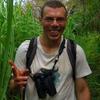In a recent review about future directions in soundscape ecology I came across a new R package called 'soundecology', which might have some promising features.
For years my core concern has been how to extract a quantitative metric (i.e. the number of bird calls) from TB of sound recordings obtained by placing autonomous sound recorders in natural areas where species of conservation interest are present. Ultimately, we would like to use some quantitative metric (like the number of calls recorded per time unit) as an index of population size to monitor populations over time.
This new package builds on previous R packages to read in .wav files, and provides two simple indices (in functions 'acoustic_diversity' and 'bioacoustic_index') based on standard biodiversity indices (e.g. Shannon diversity index) that reflect roughly how 'diverse' the acoustic energy is distributed across the recorded frequency spectrum. These indices do not identify certain patterns (i.e. species), and could be equally diverse in a very noisy urban environment as in a natural environment, so you have to be careful how you apply them.
However, the caveat of simplicity aside, the functions run relatively fast (calculating the index only takes a few min for a 2 hr recording) and in my preliminary screening for a bunch of sample files I had (where calls of a seabird species had been manually counted) the acoustic diversity was positively correlated with the number of calls. Critical settings are the min and max frequency (to specify the frequency range in which you would expect your target species, and filter out background noise) and the db_threshold, which effectively ignores faint background noise (but can of course also ignore faint target species vocalisations).
These functions will not replace all requirements for more sophisticated processing of sound recordings, but for some applications they may provide a very efficient approach to analyse a large number of recordings and obtain a quantitative metric that can be compared over time or space.
16 October 2017 12:51pm
Steffen,
Thanks for that tip-off, I'd not seen that paper before. One of the speakers at my bird bioacoustics meeting in July covered soundscape ecology, with some interesting data comparisons of the different metrics. His presentation is on our website if you would like a copy?
Also, I've just emailed Danile Hayhow about the work on capercaillie I've been doing in 2016 & 2017- recording lekking calls to see if an activity index compares with standard survey methods. I'd be very keen to talk this over with yourselves at the RSPB in preparing the journal publication, as it will incorporate the survey data from 2017 collected by RSPB Scotland staff.
Thanks, Carlos



Carlos Abrahams
Baker Consultants